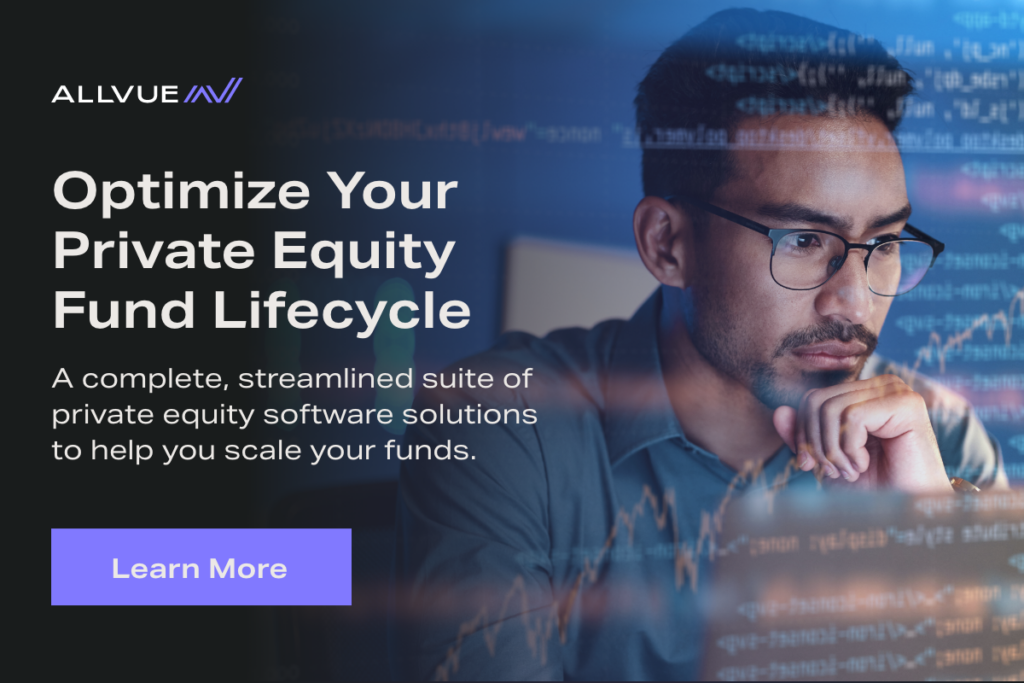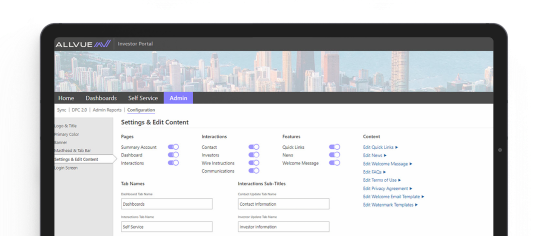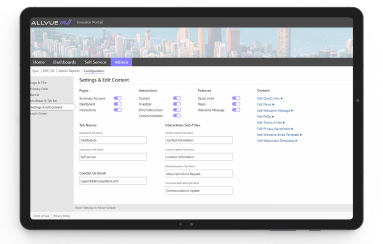
By: Kamil Godlewski
Product Manager
June 10, 2024
Private equity (PE) can be broadly defined to include several types of investment, each tailored to companies at various stages of their lifecycle.
At one end of the spectrum, there’s venture capital which provides funding to promising early-stage start-ups that are still establishing themselves in the market. On the other end, there are leveraged buyouts (LBOs), whereby PE firms acquire controlling stakes in mature companies with solid market positions and long track records of revenue generation.
Positioned between these two is another form of private equity investment known as growth equity. Also called “growth capital” or “expansion capital”, growth equity targets firms that have outgrown the venture capital stage but aren’t mature enough to IPO or to participate in a leveraged buyout.
In this guide, we’ll tell you everything you need to know about growth equity, including how it works, its key characteristics, and how it helps the companies it invests in achieve greater valuation
Defining Growth Equity
Growth equity is an investment strategy that provides fast-growing, but established companies with capital and support for a transformative leap in their development.
These are companies that have surpassed the initial hurdles of a start-up and now have a proven business model, a sizable customer base, and consistent revenue streams. They are now at a critical juncture where an injection of capital can significantly accelerate their growth trajectory and take them to the next level.
This is where growth equity firms come in. In exchange for a minority ownership stake, they provide funding to these companies — which is then used to support growth initiatives like:
- Expanding or restructuring operations.
- Entering new markets.
- Developing new products.
- Financing strategic acquisitions.
Here are some real-world examples of growth equity deals:
Key characteristics of growth equity
Growth equity has several unique characteristics. Let’s examine the primary ones.
- Investment in established companies: Unlike venture capital, for example, which targets early-stage start-ups, growth equity targets companies that have established a strong foundation in the market.
- Minority stake: Growth equity investments are typically made in exchange for a minority stake — unlike leveraged buyouts, for example, which involve acquiring a majority stake in a company. The existing business owners retain overall strategic and operational control.
- Moderate risk: The positioning of growth equity in a company’s lifecycle provides a compelling balance of risk vs. reward. By investing in companies with a proven track record and a clear path for growth, they gain exposure to potentially high returns while avoiding some of the risks associated with early-stage ventures.
The growth equity investment process
Here’s a quick breakdown of the growth equity investment process.
1. Deal sourcing
Like any other PE deal, everything starts with a firm deciding it wants to invest in growth equity and then actively sourcing for deals or opportunities. Some of the channels through which a PE firm can source for growth equity investments include:
- Networking with contacts in the industry.
- Attending industry conferences.
- Collaborating with investment bankers specializing in the growth equity space.
- Reviewing proposals from growth-stage companies that are looking for funding.
2. Company evaluation
The sourcing process may yield several potential candidates. A preliminary analysis of these candidates then follows. This involves reviewing their financial statements, business plans, and market position. Candidates demonstrating strong growth potential, a scalable business model, and a clear competitive advantage progress to the next stage.
3. Comprehensive due diligence
For the shortlisted companies or companies, the PE firm conducts comprehensive due diligence on them. This involves a thorough examination of the company’s financial health, operations, legal standing, and management. Investors carefully assess potential risks and ensure the company aligns with their investment goals.
4. Deal negotiating and structuring
If the due diligence confirms the company’s potential, negotiations around the investment terms commence. This stage involves determining the amount of funds invested, valuation of the company, and ownership structure.
5. Closing and investment
Upon finalizing deal terms, relevant legal documents outlining the rights and obligations of both the firm and the portfolio company are drafted and reviewed. If both parties are satisfied, the documents are signed. The investment then officially closes with the growth equity firm injecting capital into the portfolio company.

How growth equity creates value for portfolio companies
Growth equity primarily creates value for portfolio companies by providing them with the capital they need to grow and expand. However, that’s not the only benefit. Here are some additional ways that growth equity creates value for companies:
- Strategic and operational support: Firms that specialize in growth equity investment bring a wealth of experience and industry knowledge to the table. They can work closely with the portfolio company’s management team to develop and implement some of the growth plans we mentioned, including market expansion, new product development, operational improvements, and so on. They can also act as a sounding board for the management team as it navigates critical decisions.
- Network and connections: Growth equity firms often have extensive networks within their industries. Through these networks, they can connect the portfolio company with new partners, talent and even customers. Such connections can significantly accelerate the company’s growth trajectory.
Exit strategies in growth equity
Eventually, growth equity funds will seek an exit strategy (usually within 3-7 years post investment) so they can collect a return on their investment and move on to the next opportunity. Several exit options are available. These include:
- Initial Public Offering (IPO): This involves selling shares of the portfolio company to the public on a stock exchange. An IPO is one of the most profitable routes of exiting an investment. It allows for a wider investor base and can lead to substantial returns. The downside of an IPO is that it can be long and complicated — in fact, the process from start to finish can take months and sometimes even years. Additionally, IPOs are market-sensitive, meaning their success depends on current market demand.
- Acquisition: This involves selling the portfolio company to a large, established player in the industry. This can provide a faster and less complicated exit compared to an IPO.
- Secondary sale: Growth equity investors can also choose to sell their stake to another PE firm or strategic investor. Secondary sales provide an even easier and less complicated exit than IPOs and acquisitions. However, some challenges of this approach include finding the right buyer and correctly valuing the investment.
Factors affecting the choice of exit
Several factors influence the choice of exit route for growth equity investments.
- Market conditions: Favorable market conditions, such as a booming stock market or strong investor appetite for IPOs, can make an IPO an attractive option. Conversely, an acquisition might be preferable during an economic downturn.
- Regulatory environment: The regulatory environment can impact the feasibility and attractiveness of different exit routes. For example, stringent regulatory requirements for public companies might make IPOs less appealing than acquisitions or secondary sales.
- Stakeholder interests: The interests and goals of all stakeholders also affect the exit strategy. Remember that with growth equity, the PE fund only acquires a minority stake — the management team retains majority control of the portfolio company. Any exit plan must align with their long-term goals. For instance, the management team may not be ready to go public or be acquired, which leaves a secondary sale as the only option. That said, both parties usually have an understanding of exit options before signing a deal, so this will rarely be an issue.
- Investor time horizon: Growth equity firms typically have a set investment timeframe (3-7 years). If nearing the end of that period, an acquisition or secondary sale might be a more suitable option compared to a potentially lengthy IPO process.
- Company performance: The company’s financial health, growth trajectory, and overall readiness for public markets significantly influence the chosen exit route. A strong track record and consistent growth support the case for an IPO, while an acquisition might be more suitable for a company facing temporary challenges.
What’s the current status of growth equity, and what does the future hold?
Growth equity has been one of the fastest-growing PE sectors in the last two decades. 2021, in particular, was a record year for this segment, with total fundraising hitting $132 billion (a 56.5% year-on-year rise), according to McKinsey.
Unfortunately, in the last few years, some negative global developments — including geopolitical tensions (such as the Russia-Ukraine war), rising interest rates and inflation, and stock market volatility — have slowed down the upward momentum. The number of deals and returns from this PE strategy has trended downward.
For example, data shows that fundraising for global private equity was down 17% in 2022. In terms of returns, the first three quarters of 2022 saw the median growth equity fund fall by 7.3%. This decline would continue into 2023, with venture capital and growth equity reaching their lowest level of cumulative capital raised in 8 years. Meanwhile, in Europe, between 2022 and 2023, the number of growth equity deals decreased from 1,357 to 583, a 57% drop.
Despite these setbacks, experts think there are reasons to be hopeful about the future.
For example, according to PE firm Adam Street, the private equity market witnessed a “valuation reset” (i.e. a market correction) between 2022 and 2023, which resulted in many growth-stage companies delaying fundraising. Now, with their cash reserves dwindling, these companies will likely return to the market soon, seeking capital to fuel expansion.
Furthermore, a thriving early-stage venture capital scene has created a big pipeline of promising and innovative companies. These companies are expected to mature and enter the growth stage very soon, at which point they will require a capital infusion to continue their growth trajectory.
In a nutshell, the near-term future looks quite promising for growth equity. PE firms that specialize in this sector should prepare accordingly.
Wrapping up: Allvue’s role in growth equity
Acquiring minority stakes in relatively established companies and helping them get to the next level is the focus of growth equity funds. The benefit for these funds is the potential for high returns and the opportunity to partner with promising businesses on the brink of significant expansion.
Like any other investment, however, growth equity investing requires comprehensive due diligence, strategic oversight, and proactive risk management to maximize its potential. Without the right tools, that can be challenging. At Allvue, we understand such challenges and are committed to supporting your business with a set of purpose built technology.
Our private equity software offers solutions for all aspects of the PE lifecycle — including deal sourcing, due diligence, fund accounting and reporting, portfolio management, investor communication, and many more. It empowers you to manage your growth equity investments (as well as your other PE holdings) more effectively and unlock their full potential.
Contact us to learn more or request a free demo to see our integrated PE tool in action.
Sources
Adams Street. Growth Equity Market Appears Primed to Shine, But Beware of Slippery Rocks. https://www.adamsstreetpartners.com/insights/growth-equity-market-appears-primed-to-shine/
McKinsey & Partners: McKinsey Global Private Markets Review 2024: Private markets in a slower era. https://www.mckinsey.com/industries/private-capital/our-insights/mckinseys-private-markets-annual-review
McKinsey & Partners. A winning strategy for growth investors at a time of uncertainty. https://www.mckinsey.com/industries/private-capital/our-insights/a-winning-strategy-for-growth-investors-at-a-time-of-uncertainty
McKinsey & Partners: McKinsey Global Private Markets Review: Private markets turn down the volume. https://www.mckinsey.com/industries/private-capital/our-insights/mckinseys-private-markets-annual-review-2023
Pensions & Investments: Silver Lake gains $4.5 billion on Alibaba IPO. https://www.pionline.com/article/20140919/ONLINE/140919806/silver-lake-gains-4-5-billion-on-alibaba-ipo
TechCrunch: Adyen Raises $250M From General Atlantic To Expand Its International Payments Platform. https://techcrunch.com/2014/12/16/adyen-250m-general-atlantic/
Edison Partners. Edison Partners Leads $62 Million Investment in YieldStreet https://www.edisonpartners.com/blog/yieldstreet-investment#:~:text=PRINCETON%2C%20NJ—Feb.,the%20digital%20wealth%20management%20platform.
BCG. Europe’s Growth Equity Landscape. https://www.bcg.com/publications/2024/opportunity-in-europes-growth-equity-landscape#
More About The Author

Kamil Godlewski
Product Manager
Kamil Godlewski is a product manager at Allvue Systems, a leading provider of investment management solutions. He has over 15 years of experience in finance and sales, working with various clients in the alternative investment space with an emphasis on private equity. He has a MBA in finance from Indiana University's Kelley School of Business and is a previous CPA license holder.



